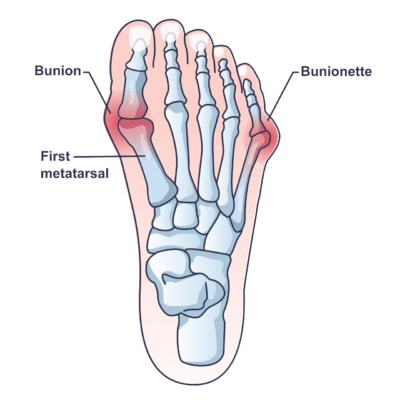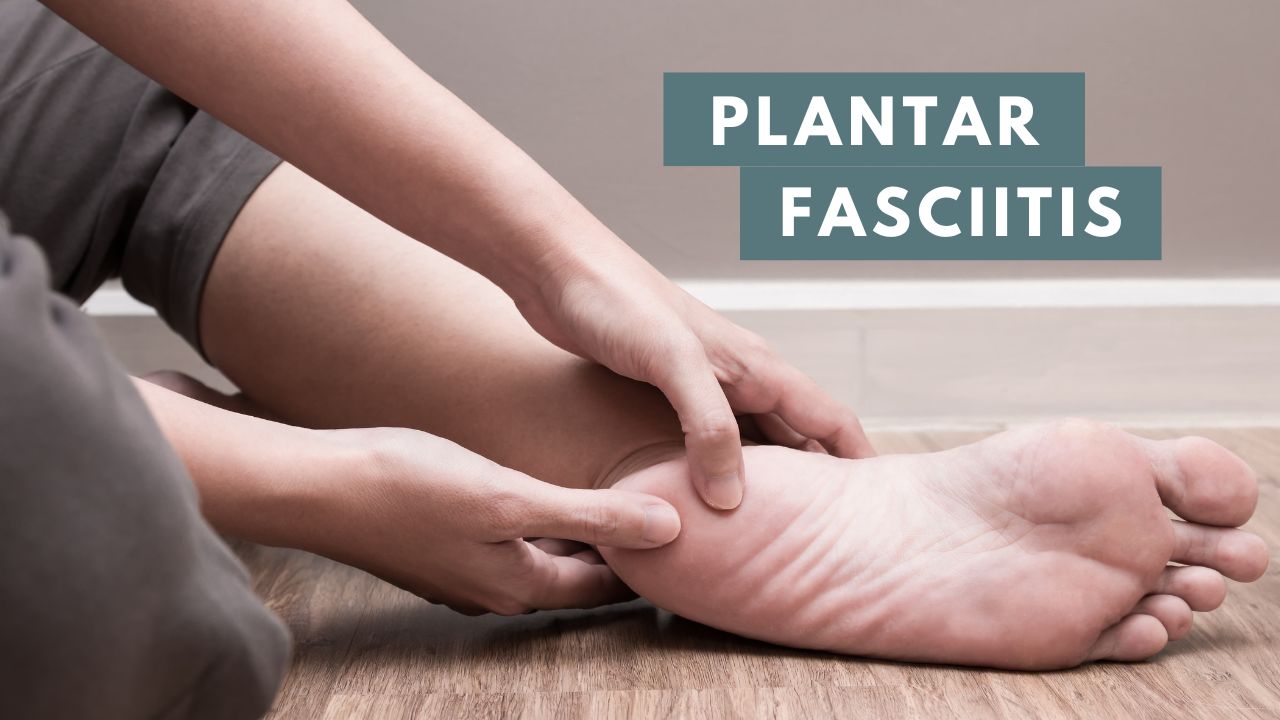Bunions are a common and often painful foot condition. A bunion looks like a bump on the side of the big toe. It occurs when the bones in the front of the foot move out of place.
What is a Bunion?
A bunion is a deformity that forms at the joint of the big toe. A bunion develops when the first metatarsal bone turns toward the inside of the foot and the big toe angles toward the other toes.
This deviations causes the joint to protrude out from the side of the foot.

Most bunions occur in adulthood. Rarely, children may be born with bunions or develop them during childhood. Bunions are more common in women than in men.
A bunion can also form on the little toe side of the foot. This is called a bunionette or tailor’s bunion.
What Causes Bunions?
Bunions are though to be caused by a combination of several factors. These factors include:
- abnormal foot mechanics affecting the big toe
- flat feet
- shoe wearing
- abnormal anatomy or shape of the bones that form the big toe
- joint hypermobility
- genetic influences
- inflammatory joint diseases
Tight-fitting shoes that have narrow toe boxes and raised heals are often blamed for the condition. Footwear can not be solely to blame as bunions are found, though rarely, in populations that don’t wear shoes.
As the bunion progresses, there is a change in the structure and function of the muscles and connective tissue in the foot that makes the condition difficult to reverse.
Improving Bunions
There is a lack of high-quality research evidence on the non-surgical options for caring for bunions.
However, based on the limited evidence available and anecdotal reports, there are some promising options for improving the appearance of bunions as well as reducing the pain associated with the condition.
Choosing Appropriate Footwear
Since narrow shoes are known to exacerbate the problem, it makes since that the first step in tackling the problem would be selecting shoes that have a wide toe-box.
Not too long ago it was difficult to find shoes that were shaped like feet. Now, a number of brands make shoes that accommodate the normal, anatomical position of the toes.
Though it’s not clear how much of an influence heel height has on bunions, it seems reasonable to avoid high-heeled shoes that force the foot forward and cram the toes into the toe box.
Foot and Toe Strengthening
It’s common to see a muscular imbalance with bunions. The muscle that pulls the big toe in towards the second toe end up overpowering the muscle that pulls in the opposite direction.
One exercise that has been shown in studies to improve the alignment of the big toe in mild and moderate bunion cases is the Toe Spread Out.

Toe Separators, Orthoses, and Night Splints
There are a number of products available that aim to return the big toe to its previous position. These include toe separators or toe spacers that go between the toes to create space, and splints that pull the big toe out away from the other toes.
Taping can also be used as a method to hold the toe in a better alignment.
Adjusting Walking Mechanics
How the foot contacts the ground directly relates to the stress of the big toe joint. Reducing the force pushing the big toe sideways can be achieved by stabilizing the big toe on the ground with each step and limiting the amount the foot pronates or rolls inward.

Massage, Mobilization, and Stretching
Massaging the foot, particularly the spaces between the toes, and stretching the toes by hand may provide pain relief and reduce joint stiffness.
Conclusion
Given the lack of high-quality research, it’s difficult to conclude to what extent bunions can be prevented or reversed without surgery.
There are a lot of anecdotal reports of people who have improved their bunions. Several studies have shown that the angle of the toe can be improved with non-surgical measures.
It’s likely that there are some cases where the angle of the toe cannot be changed without surgery. This might depend on the severity of the bone or soft-tissue deformity and other underlying or hereditary factors like bone shape and the strength of the ligaments holding the bones together.



